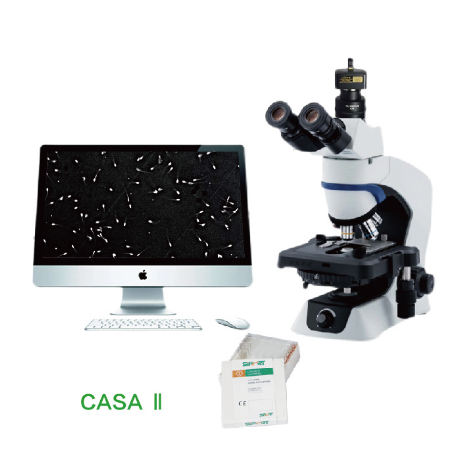High temperatures can easily trigger heat stress and other adverse reactions in livestock and poultry, leading to reduced resistance and immunity, increased susceptibility to diseases, and declines in production performance or even mass mortality. To address high temperatures scientifically and effectively, and to minimize their impact and losses on livestock production, the following technical measures are recommended for farmers in Puyang City, Henan Province.
1. Heat Prevention and Cooling Measures
-
For large-scale, well-equipped enclosed livestock sheds:
-
Utilize wet curtains, fans, air conditioners, or other equipment to reduce temperature and humidity.
-
Ensure backup power generators are available to maintain cooling equipment functionality during power outages.
-
-
For small-scale farms or those with limited facilities:
-
Reduce stocking density to lower heat production from animals.
-
Install shade nets, add fans inside sheds, spray cool water on roofs and walls during peak heat hours, use indoor mist disinfection, or add ice to drinking water to cool the environment.
-
2. Strengthening Biosecurity Management
-
Access Control:
-
Strictly prohibit unauthorized personnel, vehicles, or items from entering the farm. Essential entries require changing clothes, footwear, and thorough disinfection.
-
-
Cleaning and Disinfection:
-
Regularly clean and disinfect sheds, activity areas, and equipment. Promptly remove residual feed, bedding, manure, and other contaminants.
-
Use alternating disinfectants, adjusting frequency and concentration based on conditions. Focus on disinfecting key personnel, entry/exit points, and incoming/outgoing materials.
-
-
Structural Maintenance:
-
Increase perimeter patrols to repair rain-damaged walls and prevent rodent entry.
-
After rain, check roofs, walls, and floors of sheds and storage areas for leaks and address them promptly.
-
-
Pest Control:
-
Regularly spray insecticides to control mosquitoes, flies, and ticks.
-
Install mosquito nets in sheds and use approved insecticides for comprehensive spraying.
-
-
Waste Management:
-
Properly handle deceased animals and manure to prevent contamination.
-
Increase wastewater discharge frequency to avoid backflow during heavy rain, which could pollute the farm environment.
-
-
Rain and Sewage Management:
-
Inspect and clear drainage systems, reinforce flood barriers or walls, and fill low-lying areas.
-
Separate clean and contaminated pathways, ensuring rain and sewage are diverted separately.
-
Enhance manure treatment capacity and frequency to prevent overflow during heavy rain.
-
Install rain shelters over disinfection pools at farm entrances and regularly replace disinfectants to maintain efficacy.
-
3. Targeted Prevention of Common Summer Livestock Diseases
-
Cattle:
-
Focus on preventing foot-and-mouth disease, foot rot, and mastitis (keep cow beds dry and inspect hooves regularly).
-
-
Pigs:
-
Prioritize prevention of erysipelas, pasteurellosis, streptococcal disease, and eperythrozoonosis. Regularly check hooves.
-
-
Poultry:
-
Focus on preventing fowl cholera, Escherichia coli infections, and coccidiosis (ensure dry bedding).
-
-
Sheep:
-
Prioritize prevention of foot-and-mouth disease, clostridial enterotoxemia, and parasitic diseases (pay attention to hoof care).
-
-
Control Measures:
-
Implement vaccination programs and strengthen biosecurity measures.
-
Closely monitor disease trends and conduct timely prevention and control actions.
-
4. Enhancing Feeding Management
-
Temperature and Humidity Control:
-
Maintain appropriate temperature and humidity in sheds to enhance animal comfort and reduce stress.
-
-
Feed Quality:
-
Store feed properly to prevent mold or spoilage; discard any compromised feed.
-
Adjust feed formulations to increase protein content and reduce energy content appropriately.
-
-
Feeding Schedule:
-
Feed concentrates twice daily (morning and evening), avoiding feeding between 10:00 AM and 6:00 PM to ensure adequate intake.
-
Maintain consistent feeding times and quantities to prevent nutrient imbalances.
-
-
Water Supply:
-
Provide sufficient clean, cool water (10-15°C) and consider adding electrolytes or multivitamins to drinking water to mitigate heat stress.
-
-
Pest and Rodent Control:
-
Regularly clean manure and residual feed, maintain drainage systems, and remove weeds to suppress mosquito and fly breeding.
-
Monitor for rodents in sheds, feed storage, and warehouses, and implement timely rodent control.
-
Use bird-proof measures to prevent bird-related contamination.
-
5. Strengthening Disease Monitoring and Reporting
-
Increased Patrols:
-
Regularly monitor animal behavior, resting state, responsiveness, feed and water intake, coat condition, and manure characteristics.
-
-
Key Area Monitoring:
-
Enhance oversight of personnel, material transport, shed fencing, feed and water troughs, and transport vehicles.
-
-
Early Detection and Response:
-
Isolate and test animals showing abnormalities promptly for early diagnosis and treatment.
-
6. Emergency Preparedness
-
Emergency Supplies:
-
Develop comprehensive contingency plans and stockpile anti-heat stress medications and emergency equipment.
-
-
Safety Measures:
-
Conduct regular safety inspections of critical areas and equipment to eliminate hazards.
-
-
Emergency Duty:
-
Implement 24-hour monitoring and ensure technical staff are always available.
-
Increase on-duty personnel during heavy rainfall or prolonged high temperatures, and closely monitor weather forecasts for timely action.
-
7. Additional Recommendations
-
Reduce Stress Factors:
-
Avoid stressors such as regrouping, transportation, or vaccination during high temperatures. If necessary, perform these activities in cooler hours (early morning or evening).
-
-
Stocking Density Adjustment:
Post time: Jul-29-2025



